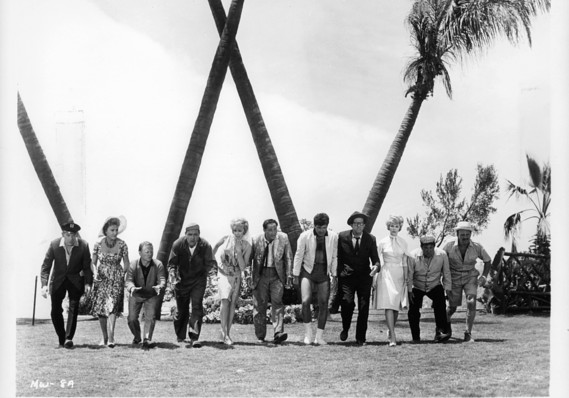 Getty Images
Getty Images
It’s a mad, mad, mad, mad world. Or so one might believe looking at the U.S. economic picture.
Consider: Stocks are hitting record highs and layoffs and unemployment are at 50-year lows. Yet the Federal Reserve is prepared to cut interest rates soon because it’s worried about the economy.
Such it is in the era of Trump. The president, who’s demanded the independently run central bank cut rates, is probably going to get his wish. And largely because his very own policies are what have the Fed worried.
The central bank frets that White House trade clashes with China and other countries have hurt farmers, manufacturers and exporters, crimped business investment and slowed the U.S. economy.
Read: Powell says economy was hit by ‘confidence shock’ — it has only partly recovered
The global economy has fared even worse with the fate of so many countries tied to China.
“Global growth has slowed,” said Mark Haefele, global chief investment officer at UBS Global Wealth Management. “The various trade disputes and tariff hikes have created uncertainty that makes it more difficult for businesses to commit to investment.”
Read: Cost of eating out is rising a lot faster than buying groceries (and cooking at home)
If that’s not enough, a divided Congress could hit another impasse this fall that leads to a government shutdown or a freeze in federal spending. Both would be bad news for the economy.
That’s why Fed Chairman Jerome Powell isn’t really focused on the economy itself — it’s doing OK, actually. He’s nervous about what economists like to call internal or external “shocks.” A trade war certainly qualifies as one.
Hence his willingness to reduce a key interest rate at the end of July.
Read: $15 minimum wage could help 27 million workers, CBO says, but cost 1.3 million jobs
Not everyone is impressed. Many economists are skeptical that a small reduction in already low interest rates will do anything to spur borrowing or help the economy. Credit is cheap and readily available, and it has been for years.
“His case for easing is focused almost exclusively on the uncertainty caused by trade negotiations and the resulting drag on business confidence and investment,” said frequent Fed critic Stephen Stanley, chief economist at Amherst Pierpont Securities. “I find the case for easing incredibly weak.”
A light load of economic data this week is unlikely to sway the argument. Retail sales in June will probably show a modest increase and reflect healthy household spending, but a handful of reports on manufacturing are expected to remain soft.
See: MarketWatch Economic Calendar
No matter. The Fed has become unmoored from its typical approach to setting interest rates. So the usual rules don’t apply.
Like the troupe of characters in the hit 1963 movie, It’s a “Mad Mad, Mad Mad World,” searching elusively for stolen loot, senior Fed officials are groping for ways to explain their pending reversal on interest rates. Just seven months ago,remember, the Fed was predicting it would raise rates several times this year.
Read: Robots are coming for your jobs — Oregon, Louisiana, Texas have most to lose
Not anymore. Now the question is just how many times it will cut rates. And whether it will do any good at all.










Add Comment